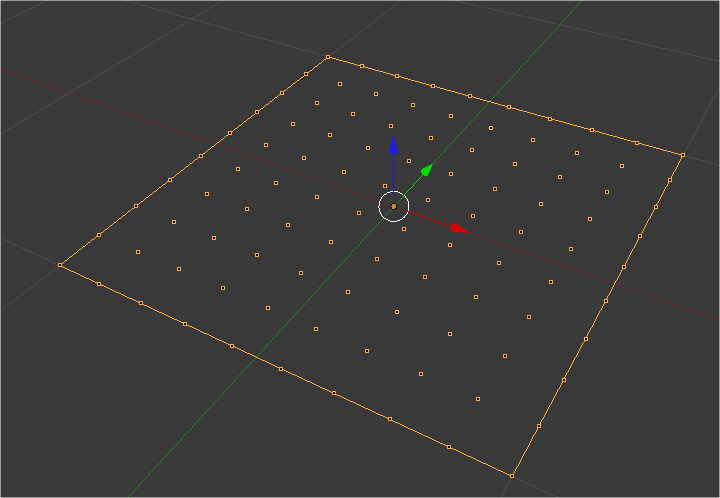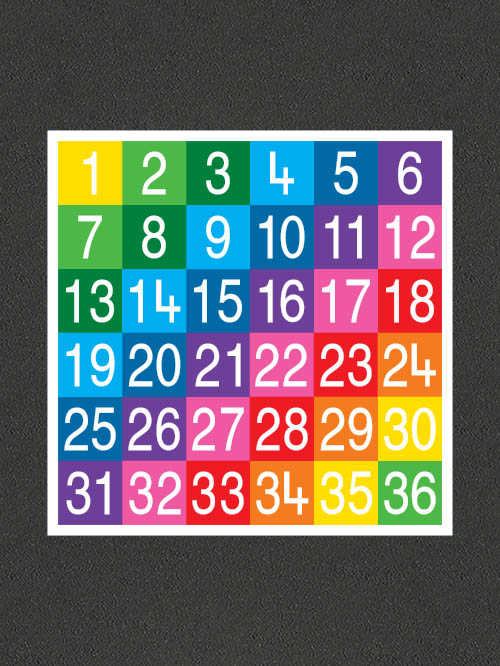

q → and p → are additional D-dimensional vectors that control, respectively, the changes in amplitude and directionality of the covariance matrix. We choose w( x) ∝ log ( k + 1) − log ( m), where m is the rank index of sample x ( m = 1 for the configuration with the largest f value).
Particle playground grid random size free#
(5)where X denotes the set of the k best samples consisting of multiple configurations obtained for k different parameter sets, w( x) is the normalized distribution of weights based on the fitness of the samples, and c i’s are free parameters. The sets of diffraction patterns obtained after having rotated each configuration are finally used to build the datasets for training the CNNs. Note that the retained portion might have a slightly different number of particles than the original configuration. We then rotate this larger copy of the system and finally take a portion of it with the same volume as the original simulation box. Note that, to rotate a configuration, we first create a larger copy of the system by copying the original simulation box in all directions. In a more general case, one could perform random rotations around a randomly selected axis. In the 3D case, given the inherent symmetry of the model of spherocylinders considered, we randomly rotate each configuration around the z axis (which always corresponds to the elongated axis of the box). A representation of this transformation in the 2D case is shown in Fig. To this end, each training configuration is rotated by a random angle before evaluating its diffraction pattern. However, we must ensure that the CNNs are able to classify the desired phases regardless of their orientation. While diffraction patterns are, by definition, translationally invariant, they are not invariant to rotations. Each diffraction pattern immediately confirms the presence of the correct quasicrystalline structure. Representative snapshots of the QCs were obtained, and their diffraction patterns are shown in Fig. In all cases, the final values of pressure and shoulder width obtained are in excellent agreement with those at which the three QCs have been shown to be stable ( 24, 27, 28, 29). Depending on the QC to be found, the distribution evolves in different directions and eventually converges to different state points. 3 (A to C) shows the evolution of the multivariate Gaussian distribution when targeting (i) QC12, (ii) QC10, and (iii) QC18. The results of the reverse engineering process are summarized in Fig. In all three cases, we start the reverse engineering process from the same state point in the fluid phase (δ = 1.5σ and β Pσ 2 = 30) and choose the fitness function appropriate for the target phase. To this end, we fix the temperature to k B T/ϵ = 0.17, a temperature for which all three QCs are stable, and let the evolutionary strategy optimize the shoulder width δ and the pressure P for each specific QC. As a natural next test, we now explore whether we can reverse-engineer all the three stable QCs (QC12, QC10, and QC12) considered in this work. Setting up the IDM in two dimensionsĪs already discussed, in addition to QC12, the HCSS model exhibits two other quasicrystalline structures, which are stabilized for different values of the shoulder width δ. This whole procedure is repeated multiple times until the fitness is maximized and/or a predetermined convergence criterion is met.
Particle playground grid random size update#
1C, the update not only allows the mean of the distribution to move toward regions with a higher fitness but also speeds up sampling by stretching the distribution when several updates are in the same direction and then shrinking it once the fitness is maximized. Last, on the basis of this score, the mean and the covariance matrix of the multivariate Gaussian distribution are updated using the CMA equations, which are designed to facilitate an efficient exploration of parameter space. We use this CNN to process the configurations saved during each simulation and assign a larger fitness to samples with a higher probability of being classified as the target phase. Here, we introduce a new fitness function based on CNNs that are trained to classify different phases based on their diffraction patterns.

In general, the fitness is a measure of similarity between a sample and a specific target, and it is maximized when the target is reached.

1B), we score and rank the samples based on their fitness f.

For each candidate set of parameters, we then perform a simulation of the system and save a number of representative configurations. The dimension of this multivariate Gaussian distribution is determined by the number of design parameters that we wish to tune. 1A), we draw a fixed number of candidate sets of parameters from a multivariate Gaussian distribution.


 0 kommentar(er)
0 kommentar(er)
